I'm trying to draw a polygon using the python interface to opencv, cv2. I've created an empty image, just a 640x480 numpy array. I have a list of polygons (four point quadrilaterals) that I want to draw on the image, however, I can't seem to get the formate right to instruct cv2 where the quadrilaterals should be, and I keep getting this error:
OpenCV Error: Assertion failed (points.checkVector(2, CV_32S) >= 0) in fillConvexPoly, file .../OpenCV-2.4.0/modules/core/src/drawing.cpp, line 2017
My code consists of essentially the following:
binary_image = np.zeros(image.shape,dtype='int8')
for rect in expected:
print(np.array(rect['boundary']))
cv2.fillConvexPoly(binary_image, np.array(rect['boundary']), 255)
fig = pyplot.figure(figsize=(16, 14))
ax = fig.add_subplot(111)
ax.imshow(binary_image)
pyplot.show()
where my list of rects in expected has the 'boundary' containing the value of a list of (x,y) points. The code prints:
[[ 91 233]
[419 227]
[410 324]
[ 94 349]]
I figured that this is the list of points for a polygon, but apparently that list has an invalid points.checkvector, whatever that is. A google search for that error turned up nothing useful.


